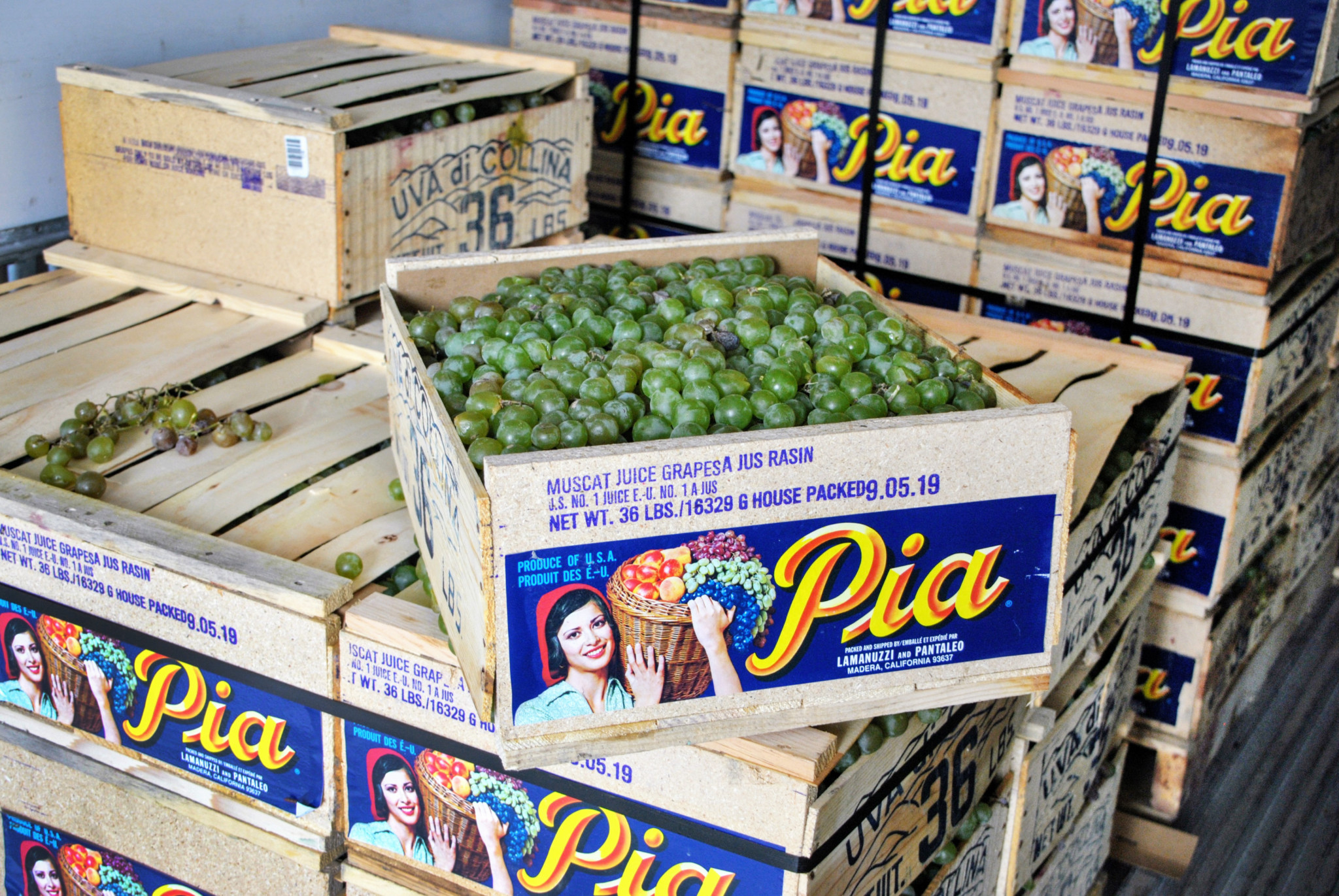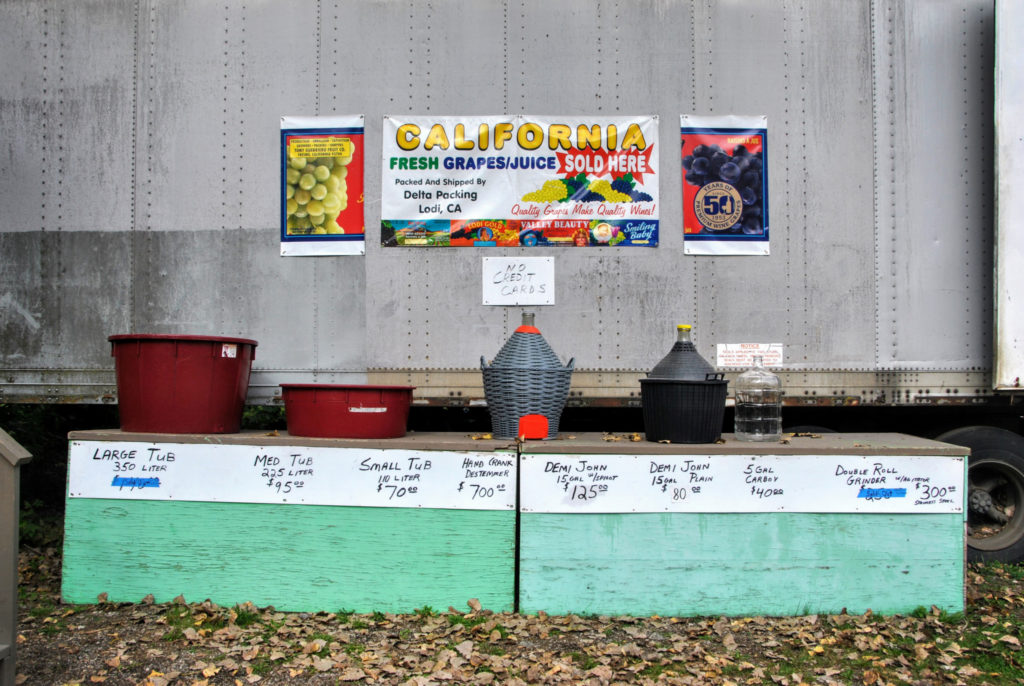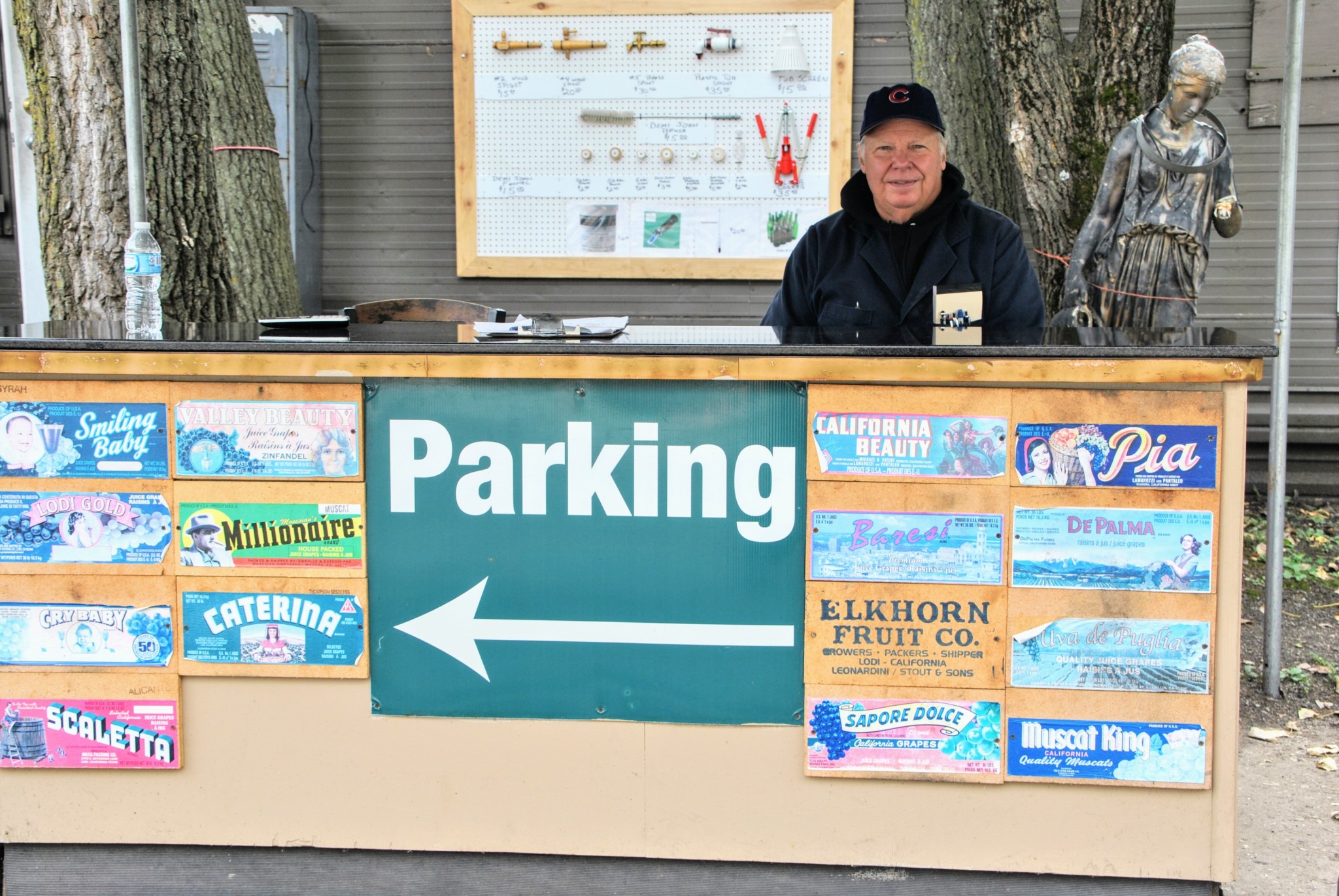Every fall, on the fringes of the now largely empty Central Manufacturing District that spans portions of Bridgeport and McKinley Park, our city’s vintners can find their one-stop-shop. Along 35th Street’s wire fence, bold hues of color populate banners, highlighting and declaring Santa Fe Grape Distributors’ sales statement: “California Grape Juice Sold Here.” On the morning of September 6th the lofty signs appear, crowning the fresh shipment of this year’s grapes. The signs arrive suddenly, so much so that one imagines the trucks and their fruit-bearing cargo arriving in the dewy, muffled stillness of the night, long before oncoming traffic is dense enough to notice. The Santa Fe Grape Distributors (SFGD) sets up shop from early September until they run out, usually around the beginning of October. Each year traffic steers into the lot at 3500 S. Racine to stock up and rejoice in SFGD’s beloved, high-quality grapes.

The lot’s entrance sinks down into the yard, opening up wide to several trailers, a kiosk, a picnic table, and a row of shipping containers, all sitting atop cracked pavement. Over at the kiosk ridden with wine labels, awaiting the hum of the cars, is the owner of the operation, Dennis Karas. He’s draped in a midnight-blue lab coat and ready to maestro people, cars, trailers, grapes, and money. Alicante Bouschet, Barbera, Ruby Cabernet, Syrah, Muscat, and Chardonnay are a sampling of the varieties you can procure from Karas and his crew—but use your legs to lift, because one box alone weighs thirty-six pounds. In total, you can find fifteen different boxes of grapes and nearly twenty different grape juice varieties at SFGD’s yearly vint market, shipped in from California, just as the street-side messages proclaim.
When I went to scope out the action at 35th and Racine one recent afternoon, a group of men were clustered around boxes of grapes—Dennis and his crew, negotiating a sale. Once what looked like an agreement was reached, the customer’s trailer backed up until it kissed the lip of the grape-filled shipping container. The suppliers loaded up stacks of compacted grapes and away the satisfied customer drove.
The Santa Fe Grape Distributors have been running their market more or less like this since the 1930s, tossing pounds of future vino down from boxcars in or around the South Side of Chicago for nearly a century. The business has roved around a handful of trainyards and different empty lots over the years. Still, for generations, Chicago wine-making communities have flocked to SFGD. They can depend on the Californian grape purveyors appearing every early fall to hawk their Vitis vinifera grapes and assorted home-fermentation equipment.
SFGD was born during the Prohibition years in Chicago, and as such their grapes were first advertised as simply produce. Early customers were primarily first- and second-generation Italians, Germans, and other European immigrants. From early on, SFGD cornered a homesick market crying for Old World customs, made possible in the States by the connected route from Chicago to Southern California that traveled along the Santa Fe Railway (from which the distributors adopted their name). During Prohibition, home winemaking boomed, thanks to a little-known loophole: each household was permitted to produce up to 200 gallons of their own wine.
Today, Karas says his base is still mostly the European immigrant community, but newer buyers largely flow from a recent influx of Croatians, Lithuanians, and Serbians. It seems Old World habits are folding in their cards—the younger generation is uninterested in the fuss of juicing their own grapes, so they tend not to buy them in raw form. SFGD’s California juice pails are starting to become more popular than the grapes themselves. Karas explained that crates and labor costs are rising too. Customers may not see boxes of grapes at the lot forever, as juices and juice varieties start to dominate sales.
Fermenting the juice is nearly effortless.
Once you acquire a five-gallon pail (ranging from $70 to $80) of SFGD’s fresh-pressed California grape juice, all you’ll need is a quick upgrade from the pail to either a five-gallon glass carboy ($40) or a fifteen-gallon demijohn ($80) container, which Karas supplies as well.The juice SFGD sells is Regina-brand juice that waits for customers in a temperature-controlled trailer, ready for immediate fermentation. “The acid, the pH level, the color, the sugar content, and the natural yeasts have all been carefully balanced,” Karas said. So all you have to do is transfer the juice into your vessel, pop on an airlock, wait, and monitor the sugar levels to determine how dry or sweet you want the wine. For around $120 you can get about thirty standard-size bottles of your own house wine, and from there you can start to build your portfolio.

Those intimidated by vertical rows of vines, traditional walled terraces, or the pretension around wine labels can find solace in the quick, no-nonsense, Chicago drawl of the experts orchestrating the lot. While I talked to Karas, several men gathered around the designated picnic table, brown bags enclosing long-necked bottles of wine. The grape distributor’s flyer asserts, “Chicago’s Largest Car-Lot Receivers and Distributors,” and they deliver on that proclamation (and deliver to your home, if you ask!).
The SFGD is a viaduct for bringing full-bodied, sippable cultural heritage to our present day. Their trucks are filled with vineyard grapes from Lodi, Fresno, Delano, Sonoma, Modesto, Kingsburg, and Bakersfield, California, and they’ve given life to home wine-making in Chicago for more than eight decades. It’s possible to feel out of your depth sitting in this busy lot surrounded by stacked-up truckloads of grape product, the grey industrial tones looming overhead, but you’re among tradition here, in the presence of the gatekeepers of a long South Side practice.
Leo Williams is an artist and writer from Miami, FL, currently living in Bridgeport. Leo’s writing explores food justice and history, fermentation, and gender. Their favorite flavor this fall is anything astringent. Follow (and connect with) them on Twitter & Instagram @kefir_daddy.


When will you be in town?
I’m talking about the grape sale. When will they arrive?
No grapes here this year.